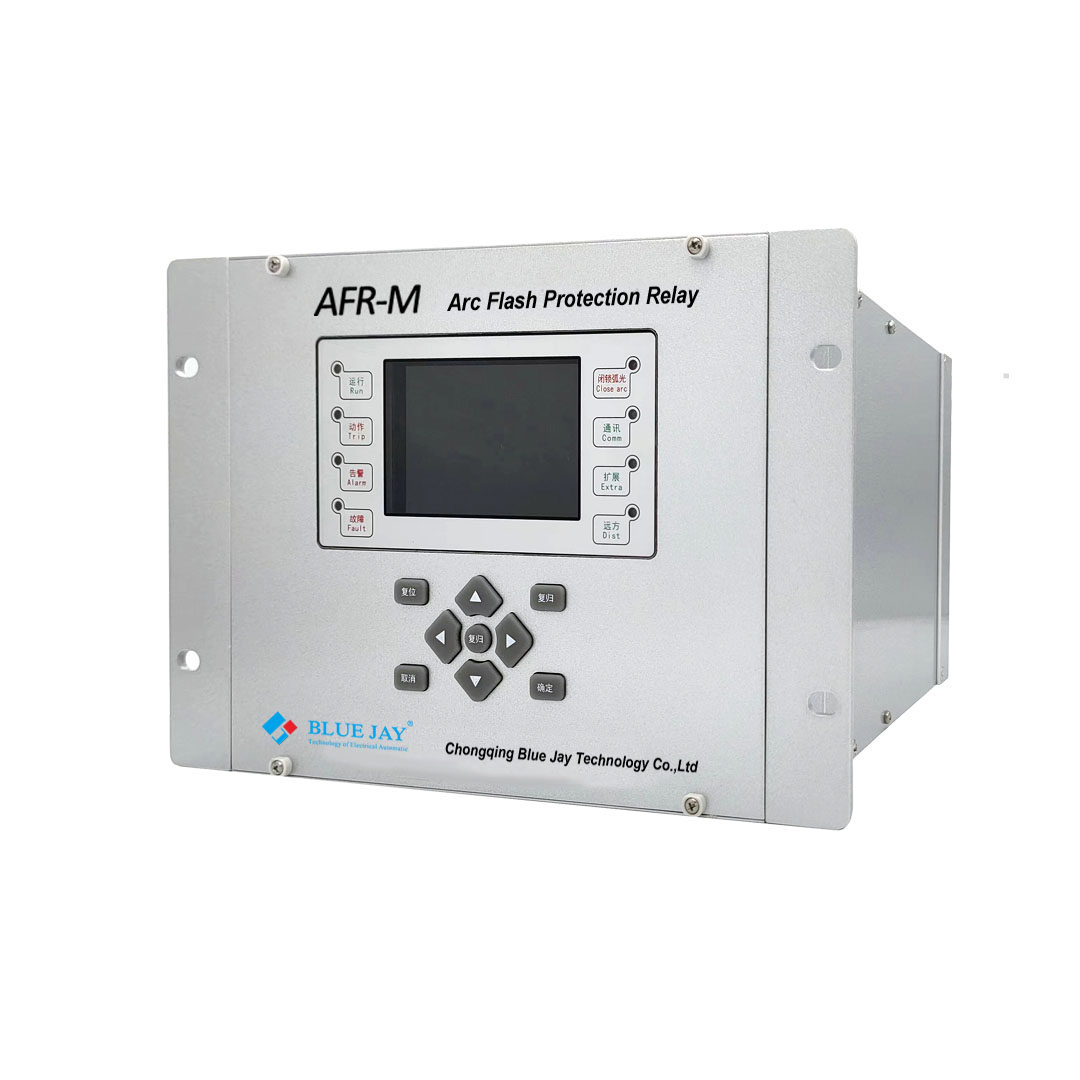
Vamp 125 vs AFR-4 – what is difference
Importance of Arc Protection Arc faults are high-risk electrical

Arc flash relays are vital safety devices in power systems, particularly high-voltage setups, protecting equipment and personnel from dangerous arc flash incidents. These arc flash relays rapidly detect arc faults by monitoring circuit current and voltage, interrupting the fault within milliseconds to prevent harm.
Their growing use in various power systems, including power plants, substations, and industrial facilities, highlights their significance in preventing arc flash.
This article will detail their operational principles, the different types available, their key features and benefits, and their applications across industries.

There are three main ways to detect arc flash: using only current sensing, only light sensing, or a combination of both current and light sensing. Relying solely on current sensing is the traditional approach to arc flash protection, but it’s often too slow to effectively prevent damage. To achieve faster arc flash prevention, light-sensing solutions emerged. However, these can sometimes incorrectly identify non-arc events as arc flashes. That’s why combining both light and current sensing is now a common and more reliable solution for arc flash protection.
Nowadays, arc flash protection relays are electrical protection devices based on light sensing and current sensing. However, there are a few arc flash protection relays based on optical principles, which identify arc flash by monitoring for light arcs in electrical systems. Regardless of how an arc flash protection system works, its main purpose is to quickly disconnect the electrical circuit when an arc flash happens. This rapid disconnection is crucial for protecting the electrical system and ensuring the safety of personnel.

Arc relays work by monitoring the current and voltage levels in the system and activating if there is a sudden increase. Once activated, the relay opens the circuit breaker, stopping the current and preventing an arc flash.
The working principle of intelligent arc flash mitigation relays can be simply described as the following steps:
Arc Flash protection relays can be divided into the following categories according to their applications and functions:
In addition to the above features, Arc Flash Relays also have some other advantages. For example, they are flexible and scalable and can be configured and expanded according to actual needs. In addition, they can be integrated with other protective devices and control systems for more comprehensive and efficient electrical system protection.
The benefits of arc gates are mainly reflected in the following aspects:
In short, the arc flash detection device is an important protection equipment in the power system, which has the advantages of protecting the safety of the power system and staff, improving the life of the equipment, improving the efficiency of the power system, improving work efficiency, and realizing intelligent management. It is very necessary to widely use arc relays in power systems.
The application of arc flash detection relay is crucial in high-risk environments, such as power plants, data centers, and manufacturing facilities. These relays ensure the safety of workers and protect the equipment from damage caused by arc flashes. Arc fault protection system are easy to install and can be integrated into existing electrical systems.
In addition to preventing arc flash events, arc flash relays can also help with incident investigations. They record the data related to the event, including the time, current, and voltage levels, and provide it for analysis. This information can help identify the cause of the event and prevent future incidents.
Overall, arc flash protection relays are an effective and necessary safety measure in electrical systems. They offer protection for workers and equipment and improve the overall safety of the workplace. The arc flash protection relay is mainly used in the following aspects:

Importance of Arc Protection Arc faults are high-risk electrical

Arc flash mitigation methods, also called arc flash mitigation

Arc Fault and Arc Flash are two different but




